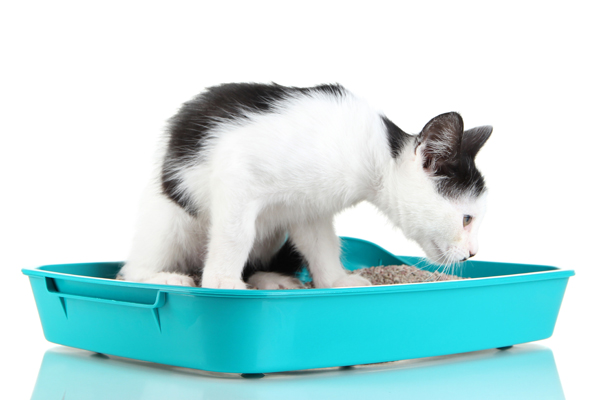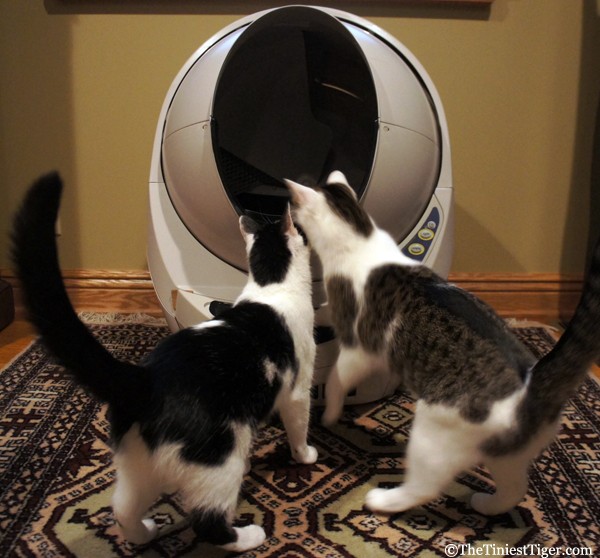
Cat Poop: What You Need to Know
Cat poop is a frequent topic of conversation in our house. With three cats and five litter-boxes, there is no shortage of cat scat stories to share. Our Bob has inflammatory bowel disease so we are in a state of constant monitoring Bob’s poop. We might even have photos on our phones.
One of the most useful indicators of your feline friend’s overall well-being is their feces. Paying attention to your cat’s poop when you’re cleaning the litter box can reveal critical information about any potential health issues.
Whether you’re a first-time cat parent or have been taking care of cats for years, being aware of the normal appearance, consistency, and odor of cat feces is crucial. Changes in these aspects may indicate a need for dietary adjustments, the addition of probiotics, or even a visit to the veterinarian. Ensuring proper nutrition, including a balanced diet pet food and accounting for factors like age – whether they are kittens, adult cats, or senior cats – can play a significant role in maintaining your cat’s health.
Key Takeaways
- Monitoring your cat’s poop can provide crucial insights into their overall health.
- Changes in feces may indicate a need for dietary adjustments or a visit to the veterinarian.
- Proper nutrition and attention to age-specific needs can help maintain the well-being of your feline friend.
Cat Poop: What’s Normal?
A healthy cat’s feces should typically display the following characteristics:
- Deep brown in color
- Maintaining a consistency that isn’t too hard or too soft
- Emitting a natural, yet not overly foul odor
Keep in mind, most cats will have at least one bowel movement per day. It’s crucial to monitor your cat’s stool for any sudden changes, as this may indicate potential health issues.
Diarrhea
Diarrhea in cats is a common issue with various possible triggers. It may be a short-lived inconvenience or persist for extended periods, potentially recurring again in the future.
When diarrhea lasts between 24 and 48 hours, it typically doesn’t pose risks, except for senior cats or kittens. However, if it continues for a more extended period, dehydration could become a serious concern.
Several common causes of cat diarrhea are:
- Dietary changes
- Food allergies or intolerances
- Inflammatory bowel disease
- Colitis
- Intestinal parasites, such as worms
- Pancreatic disease
- Cancer
- Hyperthyroidism
Should your cat experience diarrhea for more than a day or two, it is advisable to consult a veterinarian to determine the cause. Additionally, if the diarrhea appears black or bloody or is accompanied by fever, vomiting, lethargy, or appetite loss, contact your veterinarian immediately.
Appropriate treatment depends on the specific cause of the diarrhea. Some cats might require prescription medications like metronidazole or prednisolone to manage inflammation. For cases related to food allergies, intolerances, inflammatory bowel disease, or colitis, the veterinarian may suggest a specialized diet. Deworming medication or probiotics might also be necessary for some cats.
To minimize the risk of diarrhea, avoid giving cats dairy products such as milk or yogurt, as many cats struggle to digest them. When changing a cat’s food brand or type, gradually introduce the new food over several days by mixing it gradually with the old food in decreasing amounts until only the new food is being given.
Constipation
Constipation in cats occurs when they struggle or are unable to produce feces for the litter box. Occasional constipation is not a cause for concern; however, if it becomes a common issue, it is essential to consult a veterinarian.
There are multiple reasons why cats can become constipated, including:
- Over-grooming, leading to excess hair in the digestive tract
- Kidney issues
- Feline megacolon, where the colon enlarges and its muscles lose effectiveness, resulting in hard, dry stool accumulation
- Blockage in the colon, caused by materials such as string or bones
- Low fiber diets
- Internal colon issues, such as tumors or narrow areas
- Spinal problems or pain
To alleviate the cat’s constipation, a veterinarian may recommend increasing their fiber intake, such as adding canned pumpkin to their regular food or switching to more digestible food options. Hairball medications could also be beneficial.
Encouraging more exercise and water consumption can help improve the cat’s digestion, allowing waste to pass through their system more efficiently.
It is vital to discuss any fecal-related concerns with a veterinarian, but the following table may help identify potential causes:
| Symptom | Appearance | Frequency | Possible Causes |
|---|---|---|---|
| Constipation | Small, hard, dry poop | Less than once a day | Dehydration, megacolon, dietary issues |
| Constipation | Small, hard, dry poop with a lot of hair | Less than once a day | Hairballs, over-grooming |
| Constipation | Thin, ribbon-like poop | Less than once a day | Colon problems, like a tumor |
| Diarrhea | Black, tarry, runny poop | It varies | Stomach or intestinal bleeding (Consult a vet immediately) |
| Diarrhea | Smelly, pudding-like poop | 2-3 times daily | Food intolerances, inflammatory bowel disease |
| Diarrhea | Gooey poop filled with mucus | It varies | Insufficient fiber; colitis |
| Diarrhea | Various; sometimes soft, frothy, greasy poop with mucus and/or blood | It varies | Parasites |

Other Cat Messes
Cats sometimes create messes outside of the litter box, such as urine stains, vomit, and shedding fur. Addressing these issues promptly and properly can help maintain a clean and healthy environment for both cats and their owners.
Dealing with Cat Urine Stains
Cats may urinate outside the litter box due to territorial marking or dissatisfaction with the litter box location or cleanliness. Blot up as much urine as possible with paper towels and avoid using ammonia-based cleaning products, as they can attract the cat to re-mark the spot. Instead, use a carpet cleaner or dish detergent mixed with water, and let it sit for 1 to 2 hours before rinsing with a wet sponge. Afterward, apply an enzymatic cleaner to neutralize lingering odors. To deter future spraying, consider using a pheromone product that mimics the cat’s natural scent.
Cleaning Up Cat Vomit
Cats vomit occasionally, and swift cleanup can prevent odors and persistent stains. For solid vomit, pick it up with a paper towel and scrub the area with a pet-safe deodorizing cleaner. For loose vomit, scrape it into a pile with a plastic spoon, blot the area with paper towels, and then apply a deodorizer or pet stain-and-odor remover. Persistent stains or odors may require repeated cleaning.
Managing Shedding Fur
Cats shed hair, especially during seasonal changes. Regular grooming can minimize shedding; long-haired cats may need brushing several times a week, while short-haired cats may require less frequent grooming. Vacuum carpets and upholstery to remove accumulated cat hair. Use a sticky fabric cleaner or masking tape to remove cat fur from furniture and other surfaces.
Addressing these cat-related messes promptly will help maintain a clean and pleasant home environment. However, if a cat persistently soils carpets or exhibits changes in its litter box habits, it is critical to consult a veterinarian, as it may indicate an underlying issue such as kidney disease, inflammatory bowel disease, food intolerance, or bacterial infection, among others.

Frequently Asked Questions
What is Normal Cat poop Appearance?
Normal cat feces are usually firm, well-formed, and have a dark brown color. They should be covered in a thin layer of mucus and have a mild odor.
Managing Soft and Odorous Cat Poop
To address your cat’s soft and smelly feces, try the following:
- Adjust their diet by incorporating high-quality, easily digestible food
- Ensure your cat is well-hydrated by providing clean and fresh water
- Consult with your veterinarian for a possible check-up to rule out any underlying health issues
Feline Bowel Movement Frequency: Every 3 Days?
While some variance exists, it is generally normal for cats to have bowel movements about once or twice a day. A cat that defecates every 3 days may require a dietary change or a visit to the veterinarian to determine if there are any underlying health issues.
Typical Feline Pooping and Urinating Frequency
Cats usually have bowel movements once or twice a day and urinate multiple times a day, depending on their individual habits, diet, and activity level.
Hair Presence in cat poop
Hair may be present in cat feces due to grooming habits and shedding. However, if your cat frequently produces feces with large amounts of hair, consider the following options:
- Regular grooming to remove excess fur, reducing ingestion
- Consultation with a veterinarian if excessive hair consumption is a concern
Assisting Your Cat with Mixed Consistency poop
For cats exhibiting stool that is half firm and half soft, consider these options:
- Reassess your cat’s diet, looking for high-quality ingredients and balanced nutrition
- Provide ample sources of clean water to promote proper digestion
- Consult your veterinarian to rule out any medical issues that could contribute to inconsistent stool consistency